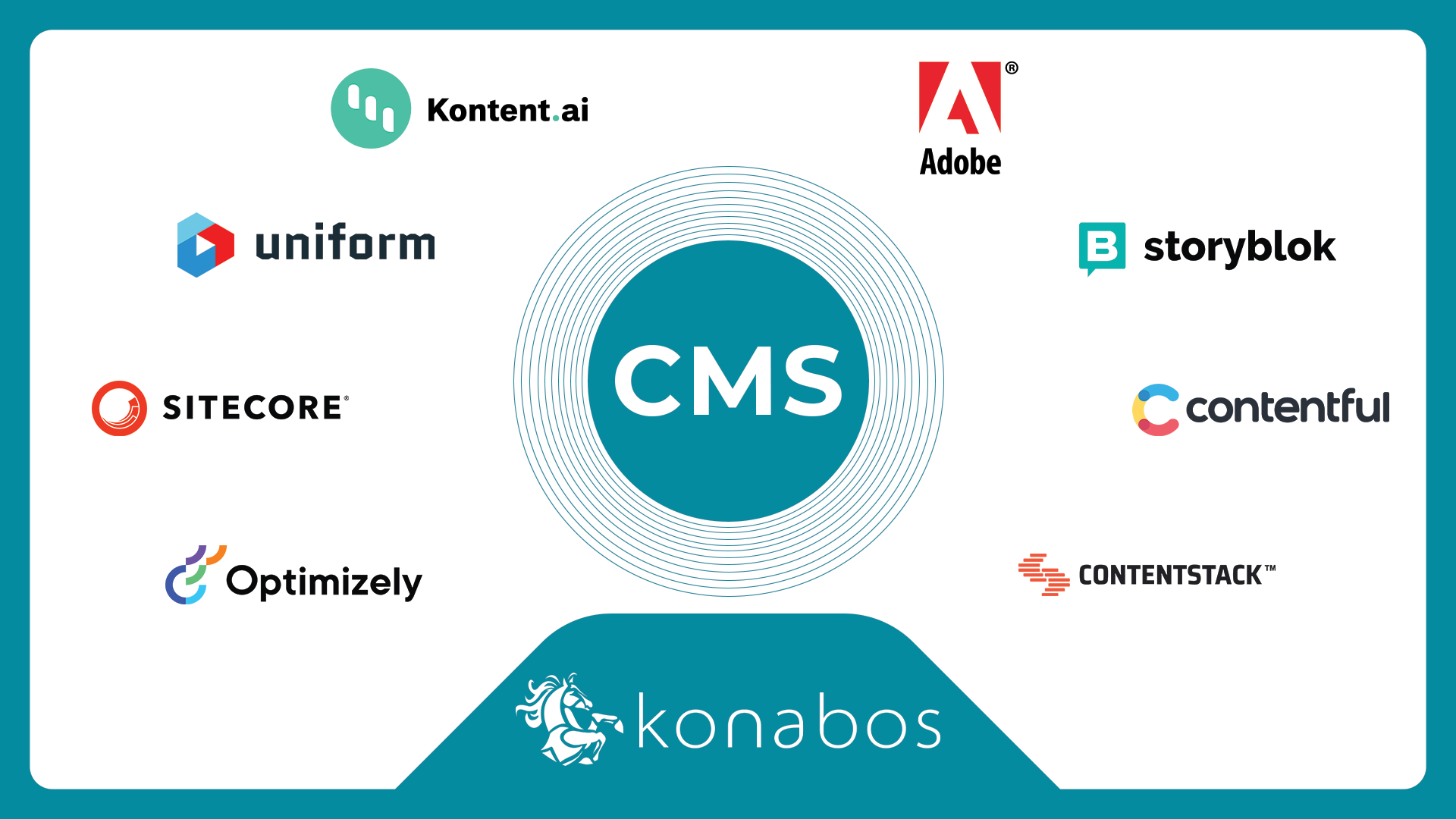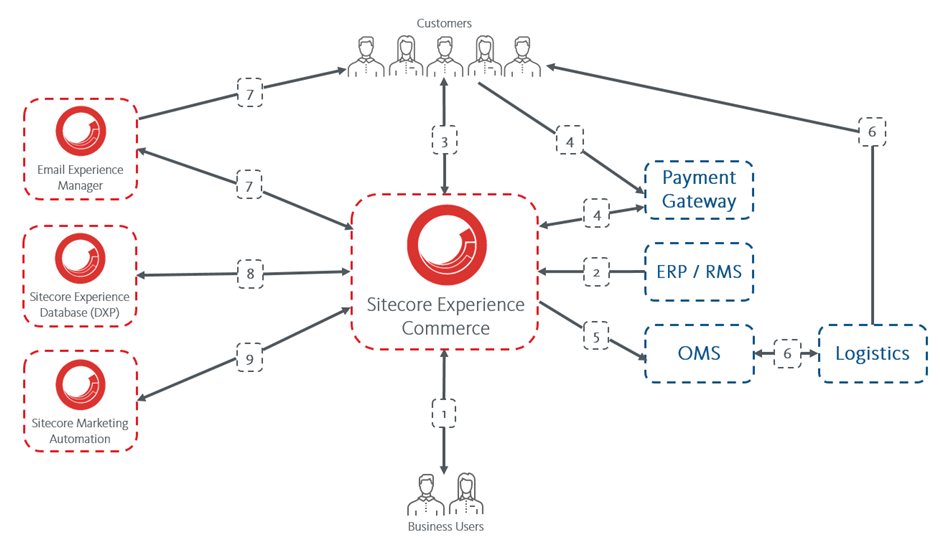The Evolution of Digital Experience Pt. 1
John West - Senior Customer Advocate
11 Oct 2022
In the Beginning
The web was largely static in that every visitor to every website had basically the same experience. Yes, CGI-BIN existed, and as well as the infamous <blink> and <marquee> tags, and eventually JavaScript (and Java applets!), but these technologies were not used to tailor experiences to individual visitors – they were used to make the common page experience more dynamic and engaging than reading a sheet of paper, and to handle form submissions.
In those days, every change to a website required a developer to modify a file, such as to update HTML, which was tedious for programmers and expensive for the site owners. Software architects realized that they could reduce their workload by separating the content of the page from its presentation – separating the text and images (and occasionally videos and sounds!) from the HTML tags. To do this, they built the first content management systems (CMS), which were specific to the individual firms where they worked. These applications reduced developer workload, increased site consistency, and allowed quick changes across entire websites by applying shared markup to all pages. This was generally the case until towards the .COM period at the end of the blazing ‘90s.
Introduction of Content Management Systems
Software entrepreneurs identified an opportunity and founded CMS vendors. One of the first and most dominant products in this space was Interwoven with its TeamSite product, which had its roots as a browser-based source code management system. Rumor has its CMS page “templating” features for business users were developed in a matter of weeks, almost as an afterthought. With CMS products, business users could maintain the content while developers maintained the code of the website.
Another product in this space was Vignette StoryServer, which was a CMS that used the Tcl programming language to merge HTML with content from the CMS back-end dynamically for each page request at runtime rather than generating and deploying static files to the webservers used to distribute content. This was an early variant of the application server, which largely replaced CGI-BIN with technology more suitable for truly dynamic websites. If memory serves correctly, it was also around this time that ATG Dynamo emerged as a sort of application server with audience segmentation capabilities, which provided for an early form of personalization.

Electronic commerce existed in the 1990s, especially in B2B scenarios such as EDI. It was not until the 2000’s that web commerce really took off for individual companies rather than resellers such as Amazon. Companies found ways to integrate their commerce solutions with the websites driven by their CMS, and ecommerce software vendors began to emerge.
All along the way, web analytics and reporting software such as WebTrends had been evolving. At first, these applications parsed web server logs to provide statistics and insight into site traffic patterns, such as volume, popular pages, and client device information. They generally didn’t operate in real time and their data was not used to individualize site experiences. Over the following decade, Google Analytics emerged as the dominant player in this market. Over time, they developed technologies to track individual users in real time.
To support complex personalization, which is demonstrably highly effective for customer conversion and retention, organizations had to stitch together many components, typically starting with, and even building on the CMS, but adding others such as a search engine, a commerce engine, an analytics engine, a personalization engine, and more. Vendors provided some facilities for integrating these components, but customers generally ended up with custom solutions that were complex, difficult to support, brittle, and often extremely challenging to upgrade when any vendor changed its implementation. Each component followed its own architectural principles and required extensive developer expertise.
The CMS software market grew very quickly. Though there was some consolidation in support of early investor payouts, there was enough demand to accommodate numerous vendors. Some vendors were so successful that they became complacent rather than pioneering new opportunities.
Sitecore OMS
It was not until January of 2012 that Sitecore released the 1.1.1 version of its Online Marketing Suite (OMS). Sitecore’s CMS had always used ASP.NET as an application server to generate all page views dynamically when requested by each individual browser. OMS stored information about site interactions to provide for true real-time personalization based on an incredible wealth about the visitor and their actions on the site. OMS supported real-time analytics rather than waiting for processes to parse web logs, but more importantly, could use that information and much more to personalize visitor experiences in real time.
Sitecore’s OMS cookied visitors even if they did not authenticate, so its web statistics could identify individual visitors rather than aggregate patterns. Customers could use this information to determine customer segments automatically and respond accordingly, such as highlighting different content depending on whether the solution perceived the user to be marketing-oriented or technology-oriented.
Unless configured not to, browsers always pass the referring site that contains the link that the visitor clicked to get to an organization’s web property. At the release of OMS, most search engines passed search keywords as query string parameters to the target sites, so Sitecore could determine the search term that brought the customer to the site. For privacy protection (or more likely, to increase profit by only providing this functionality for pay-per-click customers), most search engines disabled this functionality.
OMS also supported experimentation, such as A/B testing. As a simple example, different visitors receive different content, such as text and imagery. The experience platform associates outcomes such as page views, registrations, and conversions with those test criteria, which it then uses to determine and present winning strategies automatically.

Evolution to Digital Experience Platforms
Digital experience platforms (DXP) have many additional features. OMS was later rebranded as Digital Marketing System (presumably to indicate support for multiple publishing channels) and eventually renamed to XP (Experience Platform). OMS was not the only experience platform to emerge, but truly set the vision and standard for the industry.
Over time, experience platform vendors implemented and acquired additional capabilities, such as email campaign management and order management, which allowed the vendors to sell their products as entire product suites rather than components of a complete solution. In truth, these additional components typically followed different architectural design principles and even used different technologies, resulting in inconsistent developer and user experiences for products from a single vendor. Additionally, the vendor’s integrations between these products in the vendors own suites were often substandard, presenting their own technical challenges for customers. Many customers already had some of those components, and therefore had no interest in these offerings from the vendor. The suite vendors had to market interoperability with third-party products, but in truth could barely keep their own components interoperating well. Finally, developing and maintaining so many products diluted the original CMS vendors from their core competency of content management, which continued to atrophy under complacency.
Technology trends including service-oriented architectures, cloud computing, and especially SaaS (Software as a Service) created opportunities for vendors to enter the market with new products that followed modern, consistent design principles. Service-oriented applications are composed from microservices that each achieve specific functionality, as opposed to monolithic applications of the past that only function as complete products.
These new offerings placed pressure on entrenched vendors, who began adding services to the edges of existing products rather than rearchitecting or replacing their software to conform to modern service-oriented approaches. These services allowed vendors to market their wares as service-oriented without implementing service-oriented architecture.
The truly service-oriented solutions, particularly headless CMS, and search, began to achieve market dominance, threatening the status quo of the CMS and experience management industries. Content management had always separated data from its use, or presentation, but headless CMS does not even offer HTML generation technology, considering presentation to be a separate component and allowing customers to use the tools of their choice.
This is an ongoing series on the evolution of digital experience. Stay tuned for more content!

John West
I’ve served as CTO of Sitecore, founded Sitecore USA in 2004 and was there as we led the company to an investment round of over a billion dollars in 2016. I’ve also been blessed to be at the forefront of our space’s transition towards headless and composable technologies. I’m incredibly grateful for my success, but my proudest moments are when I hear from hundreds of customers and digital professionals who have benefited from the hard-won lessons I’ve shared over the years.
Like so many of the team at Konabos, I am a Sitecore MVP (the world’s only lifetime MVP, a humbling distinction that recognizes our commitment to making others better). Together, we’ve transitioned from a single-vendor monolithic landscape to the new, challenging, composable DXP paradigm that’s now upon us all. The DXP space keeps changing, but one thing remains constant: great architecture always wins the value battle in the long run, and people always matter.
I’ve learnt a lot during my journey and look forward to helping you and multiplying my impact as Chief Customer Advocate at Konabos as we all “Keep Exploring” together.



Share on social media